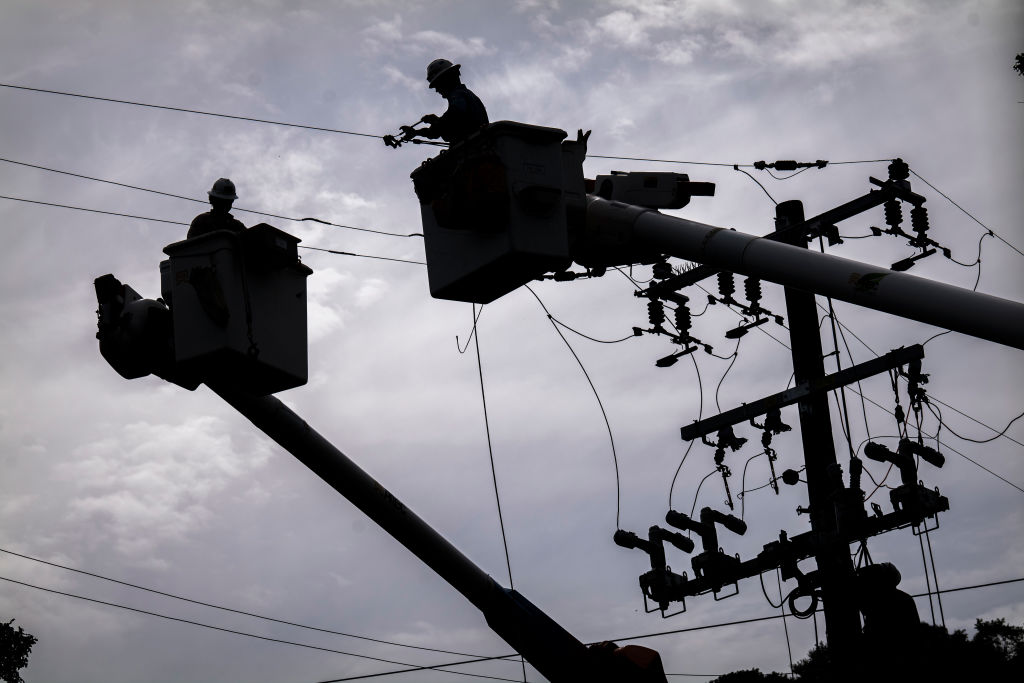
A civil rights leader’s family airs its dirty laundry on Broadway in ‘Purpose’
April 1, 2025
Inside ICE Air: Flight Attendants on Deportation Planes Say Disaster Is “Only a Matter of Time”
April 1, 2025President Donald Trump’s administration last week added 80 companies — mostly Chinese — to a list of firms barred for national security reasons from acquiring U.S. technology. The move expands a crackdown on Chinese companies that provide cloud computing services and servers powered by American chips.
U.S. officials said the restrictions aim to prevent China from developing high-performance computing capabilities, such as quantum technologies, for military use. During President Trump’s first term, the government banned several Chinese companies from accessing U.S. chips and other technologies. The Biden administration later introduced broader restrictions on exporting advanced chips and chipmaking equipment to China, seeking to limit the country’s ability to advance in artificial intelligence and high-performance computing.
Yet China’s tech industry has found ways to circumvent the bans — either by acquiring the banned U.S. chips through clandestine means or by building its AI technology with lower-tier chips that are not subject to any restrictions.
“[Export controls] are inherently leaking instruments,” Barath Harithas, a senior fellow at the Center for Strategic and International Studies who researches U.S. chip policy, told Rest of World. “You’re not going to be able to catch everyone.”
But the overall restrictions, although permeable, could earn the U.S. some “lead time” to advance its own AI technologies, before China eventually catches up on chipmaking, he said.
Here’s how Chinese institutions skirt the chip bans:
1. Smuggling in chips
The U.S. restrictions have fueled a black market smuggling network for Nvidia’s most advanced chips. Smugglers have routed banned chips into China through intermediaries in places such as Malaysia, Japan, and Hong Kong.
Some even use human couriers to smuggle in chips: A student was paid $100 for each of the six chips he carried from Singapore to China in his luggage, The Wall Street Journal reported last year. Around 12,500 chips could enter China yearly through smuggling, according to estimates by the Washington-based think tank Center for a New American Security.
2. Setting up subsidiaries
Some Chinese companies on the U.S.’s Entity List bypassed bans by accessing chips through subsidiaries. After computer server manufacturer Sugon was blacklisted in 2019, former executives formed a new company, Nettrix, that sold servers equipped with Nvidia and Intel chips.
After China’s largest server maker, Inspur Group, was added to the Entity List in 2023, its subsidiaries continued purchasing U.S. chips.
Nettrix and six subsidiaries of Inspur Group were added to the Entity List in March.
3. Using cloud services powered by banned chips
Chinese companies have also been able to access banned chips by using overseas cloud services powered by advanced Nvidia chips. The cloud services of Google, Microsoft, and Amazon have rented Nvidia-chip servers to Chinese companies and universities, according to media reports.
The Biden administration had floated a restriction targeting this gap that allows China’s use of American cloud services, but so far cloud services are not covered by export controls. The AI diffusion rule, proposed in the final week of the Biden administration, aimed to restrict chip exports to most nations in the world, exempting key U.S. allies, and also regulate foreign companies’ use of American cloud services.
4. Innovating without banned chips
U.S. chip shortages have forced Chinese companies to innovate on AI development with fewer resources. The Chinese government has provided generous subsidies and loans to help the chip sector gain self-reliance.
In January, Chinese startup DeepSeek shook the global AI industry by releasing AI models it said were trained with far less computing power than their Western counterparts.
Export controls are less effective than policymakers intended, a 2024 University of California, Berkeley, study found. The Chinese AI industry has been able to build advanced AI by stockpiling chips before they were banned and by optimizing software to use older chips more efficiently.
The current U.S. export control policy is too focused on banning access to cutting-edge chips used for building large-language models, Ritwik Gupta, one of the study’s authors, told Rest of World.
“All these older chips that aren’t export-controlled are continually useful for training [technologies] that are still a broad societal benefit to China,” Gupta said.
#China #skirts #U.S #chip #bans
Thanks to the Team @ Rest of World – Source link & Great Job Viola Zhou





